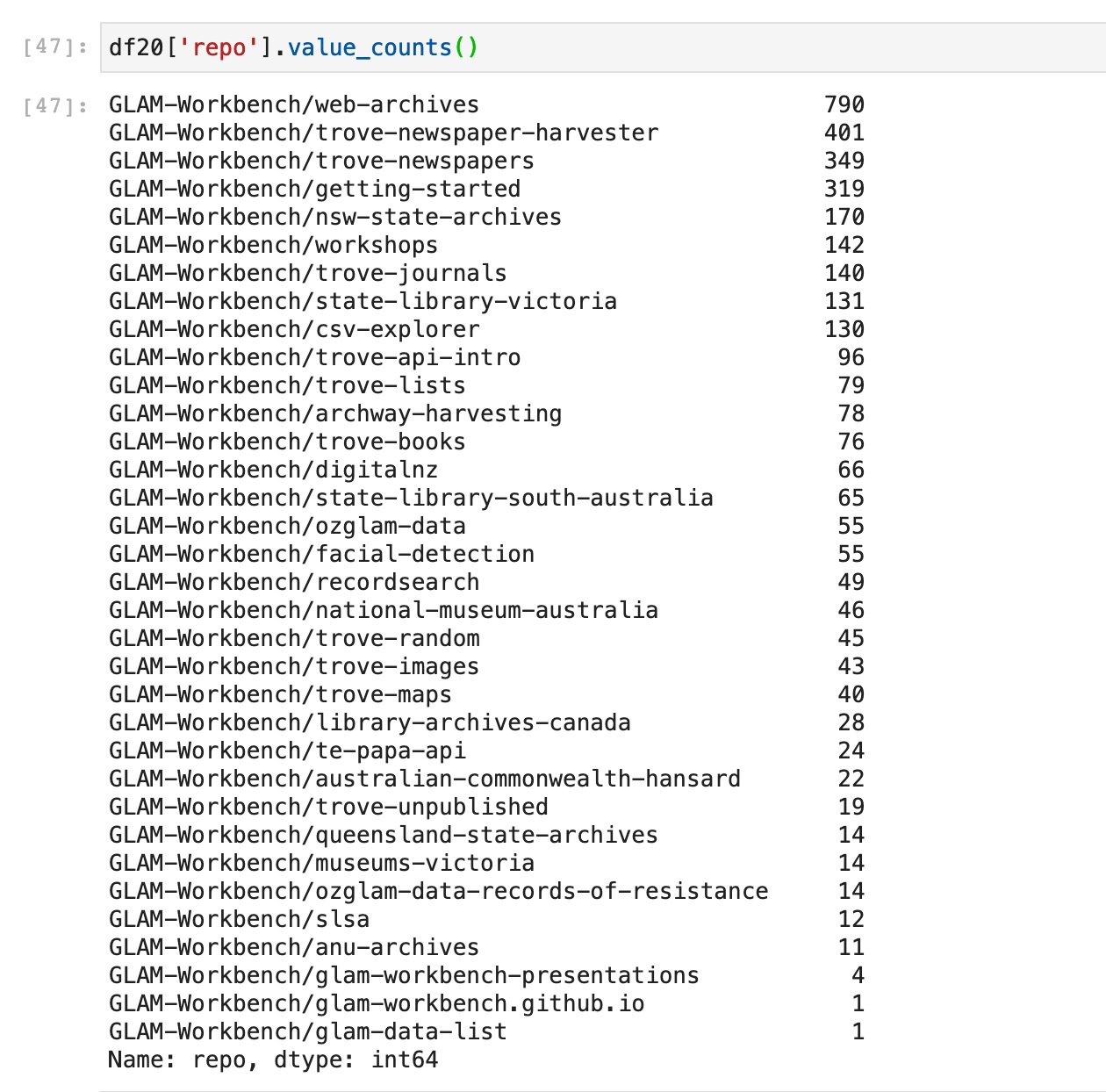The GLAM Workbench as research infrastructure (some basic stats)
Repositories in the GLAM Workbench have been launched on Binder 3,529 times since the start of this year (according to data from the Binder Events log). That’s repository launches, not notebooks. Having launched a repository, users might use multiple notebooks. And of course these stats don’t include people using the notebooks in contexts other than Binder – on their own machines, servers, or services like AARNet’s SWAN. Or just viewing the notebooks in GitHub and copying code into their own projects.
I’m suspicious of web stats, but the Binder data indicates that people have actually done more than ‘visit’ – they’ve spun up a Binder session ready to do some exploration.
Every Jupyter notebook in the GLAM Workbench has a link that opens the notebook in Binder. If you click on the link, Binder reads configuration details from the repository and loads a customised computing environment. All in your browser! That means you can start using the GLAM Workbench without installing any software. Just click on the Binder link and start exploring!
There are about 40 different repositories in the GLAM Workbench, helping you work with data from Trove, DigitalNZ, NAA, SLNSW, NSW Archives, NMA, ArchivesNZ, ANU Archives & more! The image below shows them ranked by number of Binder launches this year.
The web archives section was added this year in collaboration with the IIPC, the UK Web Archive, the Australian Web Archive, and the NZ Web Archive. Its annual number of launches is inflated a bit by the development process. But there’s been 426 launches since it went public in June.
I’m really pleased to see the Trove newspaper harvester up near the top. At least once a day (on average) someone’s been firing up the repository to grab Trove newspaper articles in bulk.
Overall, that’s about 11 GLAM Workbench repository launches a day on Binder. It might not seem like much, but that’s 11 research opportunities that didn’t exist before, 11 GLAM collections opened to exploration, 11 researchers building their digital skills…
As humanities researchers continue to learn of the possibilities of GLAM data and develop their digital skills the numbers will grow. It’s a start. And a reminder that not all research infrastructure needs to be built in Go8 unis, by large teams, with $millions. We can all contribute by sharing our tools and methods. #dhhacks
